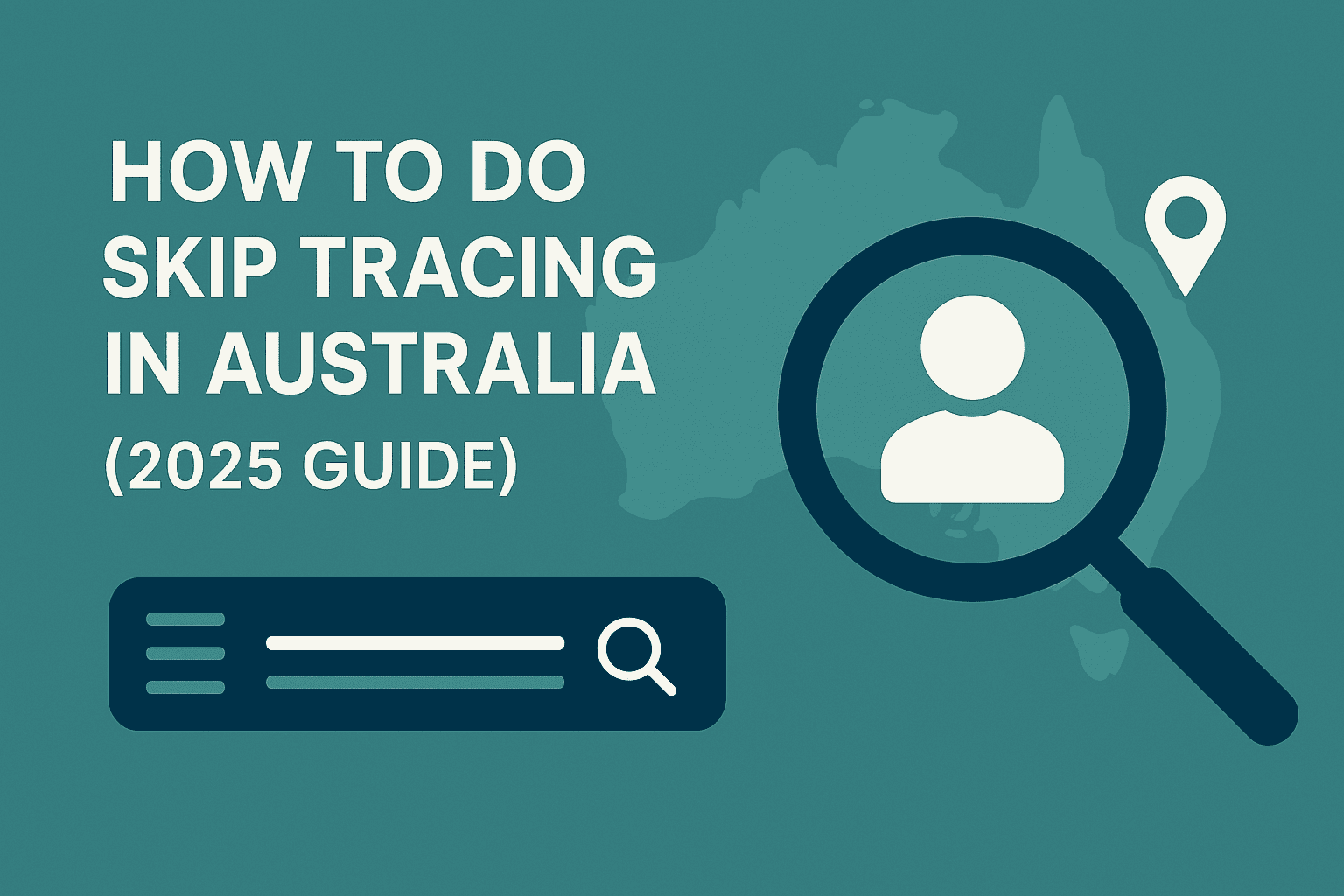Skip tracing is the process of locating someone who has become difficult to find — often used in debt recovery, legal investigations, and background checks. In Australia, skip tracing involves using public records, databases, and smart search tools to trace individuals while remaining compliant with privacy laws. This 2025 guide walks you through the legal methods, modern tools, and best practices to skip trace effectively.
What Is Skip Tracing?
Skip tracing is commonly used by debt collectors, law enforcement, investigators, and legal professionals to track down individuals who have changed addresses, disconnected phones, or deliberately gone off-grid. The term “skip” refers to the person who has “skipped town,” and tracing refers to the methods used to locate them.
The Value of Skip Tracing
Whether you’re recovering a debt, investigating fraud, or verifying someone’s location for legal reasons, skip tracing is a vital tool. It reduces manual labour, shortens investigation times, and helps organisations act faster. With the right tools and techniques, you can find addresses, phone numbers, social media profiles, and even employment data.
Caspar, our advanced data platform, enables professionals to trace individuals quickly using minimal information such as names or old addresses. It aggregates data from multiple verified sources, giving investigators a real-time advantage.
10 Tips for Effective Skip Tracing
1. Start with what you know
Collect all known details about the person: full name, any aliases, previous addresses, mobile numbers, and email addresses. The more data you have upfront, the more precise your tracing efforts will be.
2. Use smart search tools
Platforms like Caspar use intelligent name, phone, email, and address search to find leads even when details are misspelled, outdated, or incomplete. This saves hours of manual checking.
3. Look into public records
Check electoral rolls, court listings, ASIC records, and other publicly accessible data sources. In Australia, these can be powerful sources of traceable information.
4. Explore social media profiles
People often leave digital footprints. Check Facebook, LinkedIn, and Instagram for clues about employment, location, or contacts.
5. Contact known associates
Reach out to known relatives or former housemates if legally permissible. Even subtle hints can open new leads.
6. Use professional data platforms
If you’re tracing individuals regularly, invest in a data platform that consolidates sources. Caspar integrates over 1,000 verified sources updated weekly.
7. Keep everything compliant
Always adhere to privacy and data laws. Use only ethical and legal sources to avoid liabilities and ensure admissibility if your findings are used in legal contexts.
8. Log your search trail
Document your steps. This creates a transparent record that helps justify actions if needed and avoids repeating searches.
9. Cross-reference everything
Don’t rely on one result. Always cross-check new information across at least two trusted sources.
10. Don’t forget to re-check stale leads
Information changes. A lead that was a dead end last month might now yield results. Revisit key records periodically.
Final Thoughts
Skip tracing in Australia is a valuable skill used across industries including finance, insurance, law, and compliance. With access to the right tools and a solid ethical framework, it’s possible to locate individuals efficiently and legally.
If you regularly perform skip tracing or are considering a solution for your business, platforms like Caspar offer a powerful way to streamline your process and uncover reliable leads quickly.

